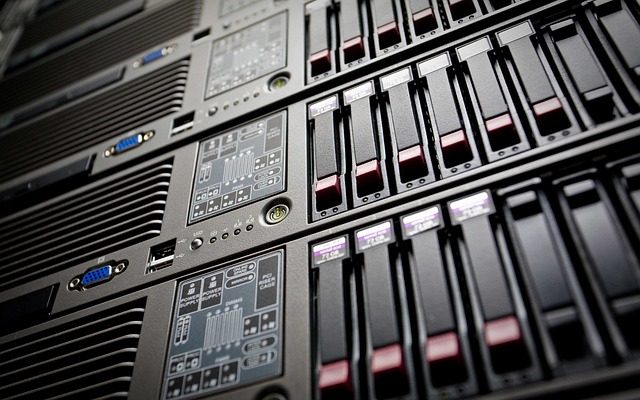How do SCM, CRM, and ERP fit into your business strategy? What makes each valuable and conducive to the efficient running of a corporation? Can these systems intertwine, and if so, how? These are the questions that often arise when seeking the suitable software for proper business management. A clear understanding and differentiation among the three systems, i.e., Supply Chain Management (SCM), Customer Relationship Management (CRM), and Enterprise Resource Planning (ERP), is crucial for streamlining business operations.
A common problem expressed by businesses is the complexity in comprehending and distinguishing between SCM, CRM, and ERP. This confusion often results in improper software utilization, hindering the businesses’ productivity and financial growth. According to the Business-Software report, 37% of CRM software users utilize less than half of the software functionalities available, inadvertently interfering with customer business growth. Similarly, the survey by Technology Evaluation Centers indicated 27% of ERP software users felt their systems had too much functionality, resulting in system misuse. A proposal to remedy this issue involves delivering a thorough explanation and differentiation among SCM, CRM, and ERP systems.
In this article, you will learn about the individual functionalities, interrelation, and real-world applications of SCM, CRM, and ERP. The complexities of these systems will be simplified, aimed at equipping you with the knowledge necessary to exploit their full potential in your business operations. This will include a detailed overview of each system, their key differences and collective benefits, ultimate aim, and the intersection where these systems ideally operate in synergy.
The article aims to equip you with the intellectual tools necessary for efficient decision-making when choosing the right software solution for your business. This pertinent information will enable you to optimise your business strategies, tailoring them according to the specific characteristics and capabilities of each software system. Consequently, your business will be able to harvest the full potential benefits offered by the SCM, CRM and ERP solutions.

Easy Definitions of SCM, CRM and ERP
Supply Chain Management (SCM) is a series of activities done by businesses to effectively manage their supply chain. It encompasses everything from the procurement of raw materials to the distribution of finished goods.
Customer Relationship Management (CRM) is the strategies, technologies, and practices used by companies to manage their relationships and interactions with their customers. It focuses on improving business relationships to increase customer loyalty and drive sales growth.
Enterprise Resource Planning (ERP) is a business process management tool that integrates various functions of a business like planning, purchasing, inventory, sales, finance and human resources into a unified system aimed to streamline processes and information across the organization.
Business enterprise applications
Microsoft 365 Apps for Enterprise
Enterprise Business apps generator
Unmasking the Power Trio: How SCM, CRM, and ERP Transform Businesses
The Symbiotic Relationship of SCM, CRM, and ERP
Supply Chain Management (SCM), Customer Relationship Management (CRM), and Enterprise Resource Planning (ERP) are three integral areas in the world of business operations. Although each one serves a distinct purpose, they are interdependent and their effective integration can propel a business towards unprecedented growth and success.
SCM handles the flow of goods, data, and finances related to a product or service from the initial procurement of raw materials to the delivery of the product at its final destination. It involves coordinating and integrating these flows both within and among companies, ensuring business operations run smoothly.
Individual Roles and Collective Impact
On the other hand, CRM focuses on managing a company’s interaction with its current and potential customers. It uses data analysis about customers’ history with the company to improve business relationships with customers, specifically focusing on customer retention and driving sales growth.
ERP, typically a suite of integrated applications, is a process by which a company, often a manufacturer, manages and integrates the important parts of its business including planning, purchasing, inventory, sales, marketing, finance and human resources. It provides an integrated and continuously updated view of core business processes using common databases maintained by a database management system.
- SCM ensures that the right products arrive at the right place, at the right time and at an optimal cost.
- CRM improves customer service, supports sales teams, and creates more targeted marketing strategies.
- ERP gives a business the ability to streamline their operations and collaborate with their department efforts.
Together, SCM, CRM, and ERP provide an end-to-end view of an organization’s operations from the supply chain to customer service. Consequently, integrating these systems can unlock the full potential of a business, driving efficiencies, improving customer satisfaction, and ultimately increasing profitability. By unifying these processes under a single software platform, businesses can make more educated decisions, reduce operational costs, and increase productivity, thus equipping themselves to thrive in today’s competitive market landscape.
Revolutionizing Operations: the Interlinked Roles of SCM, CRM, and ERP in Modern Enterprises
Exploring the Intersection of SCM, CRM, and ERP
Have you ever considered how the interplay of Supply Chain Management (SCM), Customer Relationship Management (CRM), and Enterprise Resource Planning (ERP) creates a dynamic nexus in business operations today? At the very heart of modern enterprise, these three systems interact to improve operational efficiency and customer satisfaction. SCM facilitates the efficient management of the supply chain from raw materials procurement to production, storage, and distribution, thus ensuring products reach the end customer at the right time and at an affordable cost. On the other hand, CRM enhances customer satisfaction through effective communication, feedback collection, problem resolution, and servicing. Concurrently, ERP streamlines the various business processes within an organization through automating and integrating operations into a single harmonized system.
Addressing the Complexity of Business Processes
However, a pressing issue that many organizations are grappling with is the fragmentation of these systems. While SCM, CRM, and ERP are integral parts of the business cycle, they often exist as standalone systems. This disjointed implementation results in communication gaps, redundancy in operations, and loss of critical enterprise-wide insights. For instance, lack of timely communication between SCM and CRM may lead to stock-outs, hampering customer satisfaction. Similarly, without the synchronization of SCM and ERP, there can be operational inefficiencies, such as overproduction or underproduction. Businesses, therefore, need a holistic approach to overcome these integration issues.
Perfecting Interlinking Through Best Practices
Several best practices have emerged over time to deal with the complexity. Companies such as Amazon and Uber have excelled by implementing integrated SCM, CRM, and ERP systems. Amazon, the world’s largest e-commerce platform, leverages the power of its interlinked systems to deliver millions of products to customers around the globe with accuracy and speed. Its innovative SCM system is fully synchronized with a robust ERP, thus ensuring quick turn-around times and operational effectiveness. Meanwhile, the CRM system delivers exceptional customer service. Similarly, Uber links its CRM, SCM, and ERP to connect millions of riders to drivers. These example clearly illustrate that when SCM, CRM, and ERP are properly interlinked and harmonized, it results in more agile and efficient operations that deliver a great customer experience.
Decoding Acronyms: Using SCM, CRM, and ERP to Redefine Business Performance and Growth
Unraveling the Mystery of SCM, CRM, and ERP
Isn’t it astonishing how three distinct groups of letters, SCM (Supply Chain Management), CRM (Customer Relationship Management), and ERP (Enterprise Resource Planning), could redefine and boost business performance and growth? These are not just acronyms but powerful tools that, when rightly harnessed, have the potential to transform business operations and result in exponential growth.
SCM focuses on the efficient management of a company’s supply chain—purchasing raw materials, production, and the distribution of final goods to the customers. On the other hand, CRM is all about managing a company’s relationship with its customers; it involves gathering customer data, devising strategies to retain customers, and trying to convert potential customers to loyal ones. ERP is a bit different—it integrates all the essential functions of a company, like finance, inventory, sales, human resources, and more, into a singular system. This integration helps in streamlining the process, enhancing communication, reducing duplicity, and increasing productivity.
Addressing the Predicaments
Regardless of their promising potential, implementing SCM, CRM, and ERP is not always a smooth journey. Businesses often encounter challenges that could threaten successful implementation. For instance, the high costs of these systems can deter small to medium businesses. Besides, the lack of technical know-how in setting up or managing these systems can also be a roadblock. Choosing a system that doesn’t align well with the company’s nature and goals can result in inefficiency and wasted time and resources. Consequently, there is a need to understand that these systems should not be taken as an end in themselves but a means to an end – the end being improved performance and growth.
Learning from the Masters
Various real-life examples prove the power of these systems when implemented properly. Amazon, a global e-commerce giant, is a prominent example. The company uses SCM to effectively manage their vast inventory and ensure prompt delivery. They also use CRM to gather valuable customer data, which helps them personalize their offerings and maintain a strong rapport with their customers. ERP ties all of these processes together, leading to the rise of one of the most successful businesses globally.
Similarly, Apple Inc has also optimized the use of SCM, leading to a reduction in production costs, ensuring a constant supply of products into the market, and ultimately leading to price stabilization. This approach, combined with their strong CRM that focuses on customer loyalty and brand management, has helped them remain competitive in a saturated market.
In summary, the usage and application of SCM, CRM, and ERP could indeed redefine a company’s performance and growth when implemented properly. These are not just mere acronyms, but powerful pillars that can catapult a business to greater heights.
Conclusion
Isn’t it remarkable how software solutions such as SCM, CRM, and ERP have revolutionized the way businesses operate? We spearheaded through an enlightening discussion of the distinctions between these systems, each incorporating unique teleological benefits. Nonetheless, it is essential to fathom that the power of these platforms lies in the interconnectedness of their shared data. Whether managing supply chain processes, enhancing customer interactions, or integrating various business functions, these systems create a synergistic effect propelling businesses towards efficiency and growth.
We invite you to join our ever-expanding community by following our blog, staying updated with cutting-edge software developments, and engaging in enlightening conversation. There’s a never-ending world of innovation to explore, and by staying in tune with us, you’re ensured to stay ahead of the curve. We work towards simplifying complex ideas into comprehensive content, aiming to enhance your understanding and proficiency in various domains. We assure you that our future releases will further enrich your knowledge base, bringing forth informative articles that touch upon subjects integral to modern business operations.
As we conclude this comparative overview, we recommend anticipating newer technological advancements that will further enhance these systems’ capabilities. The evolution is rapid and relentless. Brace yourselves as we dive deeper into these topics in our future posts, unraveling the mystery that is modern technology and its impact on business strategies. Be sure to keep an eye on us as we continue to bring you the most recent trends and insights in this rapidly changing field.
F.A.Q.
FAQ Section
1. What is SCM?
SCM, or Supply Chain Management, is the active management of supply chain activities to optimize customer value and achieve a sustainable competitive advantage. It involves the coordination, production, and shipping of products.
2. What is CRM?
CRM, or Customer Relationship Management, is the management of interaction with current and potential customers. Its primary aim is improving business relationships, helping with customer retention, and driving sales.
3. What is ERP?
ERP, or Enterprise Resource Planning, is the streamlining of complex business processes through integrating applications that manage business and automate many functions related to technology, services, and human resources. This can include product planning, development, manufacturing processes, sales and marketing.
4. How does SCM differ from CRM and ERP?
SCM focuses more on the production and distribution of goods, while CRM targets improving customer relationships, and ERP is concerned with integrating various business processes. Each has its own unique objectives and they are designed to assist different parts of an organization.
5. Can SCM, CRM and ERP be integrated?
Yes, often SCM, CRM and ERP systems are integrated together. This integration allows the organization to have a comprehensive view of all their operations ensuring more accuracy and efficiency.



